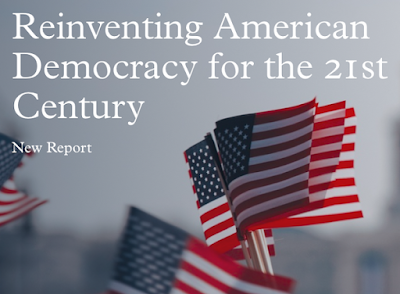Pay it forward. #NoJusticeNoPeace #BlackLivesMatter
My new read. Compelling.
UPDATE: Finished the book.
…It was the morning of Monday, April 27, 2015, and I was at Freddie Gray’s funeral. Three weeks earlier, on April 12, 2015, a police officer on a bicycle had made eye contact with the still-living Freddie Gray, a young man from the Sandtown-Winchester/Harlem Park section of Baltimore—the “wrong side” of Baltimore, a neighborhood where life expectancy was not quite sixty-five years, a full seven years shorter than in the rest of Baltimore and around the same as someone living in North Korea. Gray met the officer’s eyes and ran. The officer gave chase, soon joined by two others, and soon Gray was captured. The police searched him, and when they found a pocketknife in his pocket, they arrested him. When he couldn’t, or wouldn’t, walk to their transport van, they dragged him along the sidewalk. What happened next was a matter of dispute. But when Freddie Gray died a week later, from a severed spine, much of Baltimore believed the police had killed him.The story unfolds day by day from the points of view of eight locals of varied backgrounds and station as they traversed the uprising. As a new resident (14 months now), I found it extremely illuminating.
That belief didn’t come out of nowhere. What was life like if you grew up like Freddie Gray? The fear of being a victim of police brutality was ever present if you were young and black in Baltimore—just one more trial for kids who already carried the mental anguish and physical adversity of growing up in chronically neglected neighborhoods. You knew neighbors, cousins, uncles, aunties, and friends who’d been victims of random or targeted violence. The violence was physical but correlated with the emotional violence that was often its cause or consequence. And the violence was pervasive, a factor in every decision you made—which streets you walked down, what time you started and ended your day, whom you trusted. The most quotidian decisions were shaped by structurally determined abnormalities. You called it life…
Moore, Wes. Five Days (pp. ix-x). Random House Publishing Group. Kindle Edition.
From the author's concluding words:
…So how do we move forward? Our collective pursuit of justice must be as aggressive and intentional as the systemwide injustice that we now encounter. We must alter how we define the state and permanence of poverty. We must acknowledge and challenge our own complicity. And we must put forward policies that actively confront the systematic bias of past policies.Lots to ponder.
We call those living with the scourge of poverty “poor people,” as if it’s a title of choice, but it can become a phrase that gives permission to ignore someone’s humanity. Poverty is a condition our society does not have to tolerate or condone. “Poor people” signifies permanence. A birthright. Similar to the term “slave,” as if that’s what the individual was born to achieve. Slavery is a man-made inhumanity. A human mandate. Enslaved people are victims of the institution of slavery. The resilient souls living in poverty are victims of the institution of poverty. We cannot be true allies if we see our mandate as being saviors of a few deserving “poor people.” Everyone’s destinies matter.
Our country has a long history, and for much of it the intentional policy of the United States was to create hierarchies of people based on their class, race, and gender. We live with that legacy today, and it is an undeniable undercurrent in our politics. We need to formally and diligently examine the causes and traumas of generational economic inequality and their intersection with issues of race, gender, national origin, and sexuality. We have examples of nations that have stared into their deepest wounds and emerged stronger. In the late twentieth century, South Africa, Chile, and Northern Ireland, among others, all convened commissions dedicated to truth and reconciliation. Those commissions created a dialogue about the harm done in their communities across generations, much of it rooted in bigotry and demagoguery, and presented a path forward to better policies and the political solidarity needed to enact them. In 2015, Canada completed a seven-year process in which the Truth and Reconciliation Commission of Canada uncovered the history of the Canadian Indian residential school system and its lasting impacts on indigenous students and their families. The survivors had a chance to have their pain heard. The perpetrators had a chance to share their sorrow and apologies. Canada had a chance to begin the healing process. These processes have not been perfect and the aftermath in the respective nations has not come without false starts and setbacks, but that did not mean they stopped pushing for progress. This level of national courage is important. We individually must initiate our own truth and reconciliation process, in each of us, in our own hearts and communities. We must wrestle with the history of complicity and bias, and work to address these disparities. As Americans, we have a sacred responsibility to eliminate the myth and frequent talking point “It happened so long ago” or “Why am I being punished for what my ancestors did?” Our complicity in the ongoing harm unfolding in our neighborhoods and those of our neighbors is the surest way to guarantee that our country will not change for the better… (pp. 257-258).
_____________










